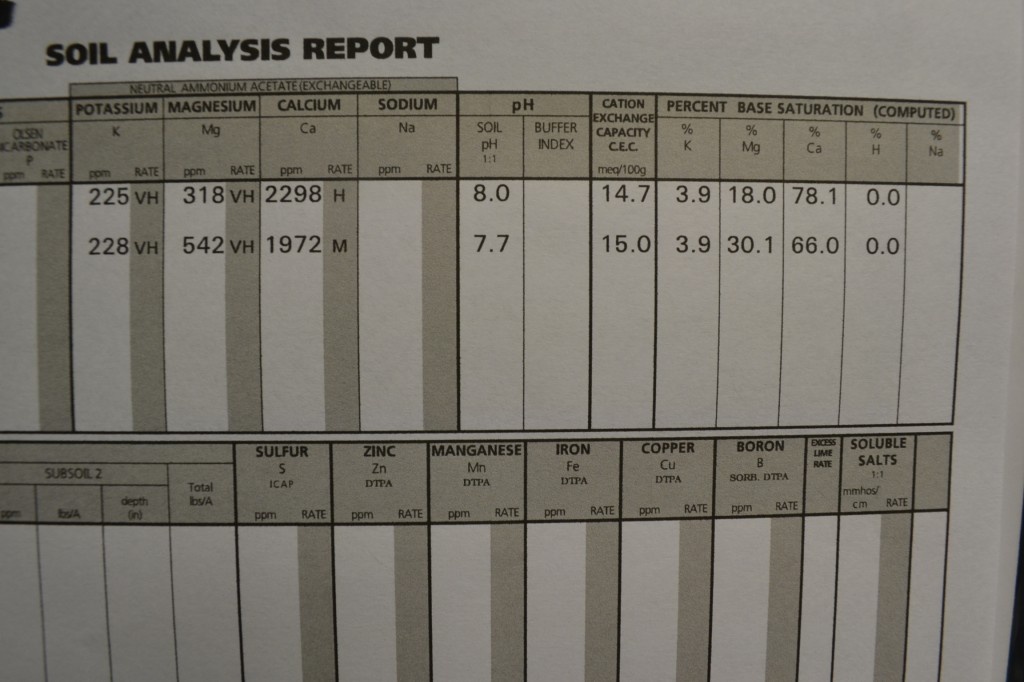Having a soil analysis taken of your yard is one of the most important steps in preparing the right fertilizer program for your lawn. A soil analysis will tell you the level of organic matter in your soil as well as the pH of your soil. Also included in most soil analysis will be potassium, magnesium, calcium, sodium and phosphorus levels. More detailed reports can also include a break down of sulfur, zinc, manganese, iron, copper and boron. Most home owners do not know the importance of each of these elements and how it affect the quality of their lawn. Understanding the impact of these elements will help you tailor your program to maximize the quality of your turf grass.
Understaning soil analysis results.
What is pH in soils and how does it affect my lawn? Soil pH is the measure of acidity or basicity found in the soil. Soil pH can range from 0-14. A soil pH of 7 is considered neutral because it falls in the middle of the range. A pH level in soil below 7 is considered acidic. A pH level in soil above 7 is considered alkaline. Most plants including turf grass thrive in soils with a pH between 6 and 7.5. If your soil falls above or below the preferred levels, it may be necessary to amend your soil.
In order to amend soil that is below a pH of 7, you must add lime to your property. Using a finely ground lime product will make this process much easier. The amount of lime required balance the pH in your soil depends on how low your soil pH is. Only through the use of a soil analysis, can you truly see what your pH level is.
In order to amend soil that is above a pH of 7, you must add organic matter to your property. Products like sulfur and aluminum sulfate are acidifying agents that can lower your pH. Refer to your soil analysis before applying these products to your lawn.

